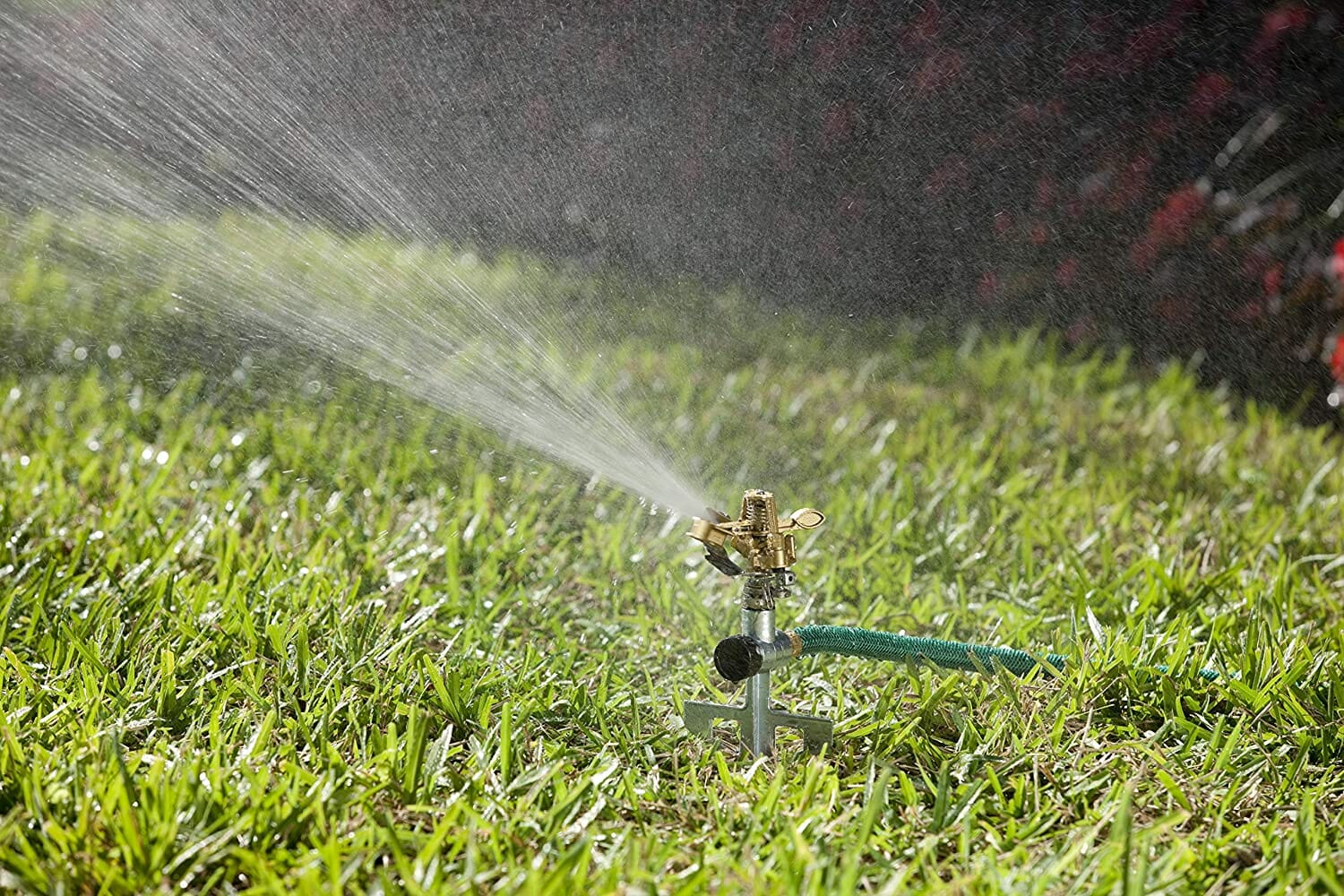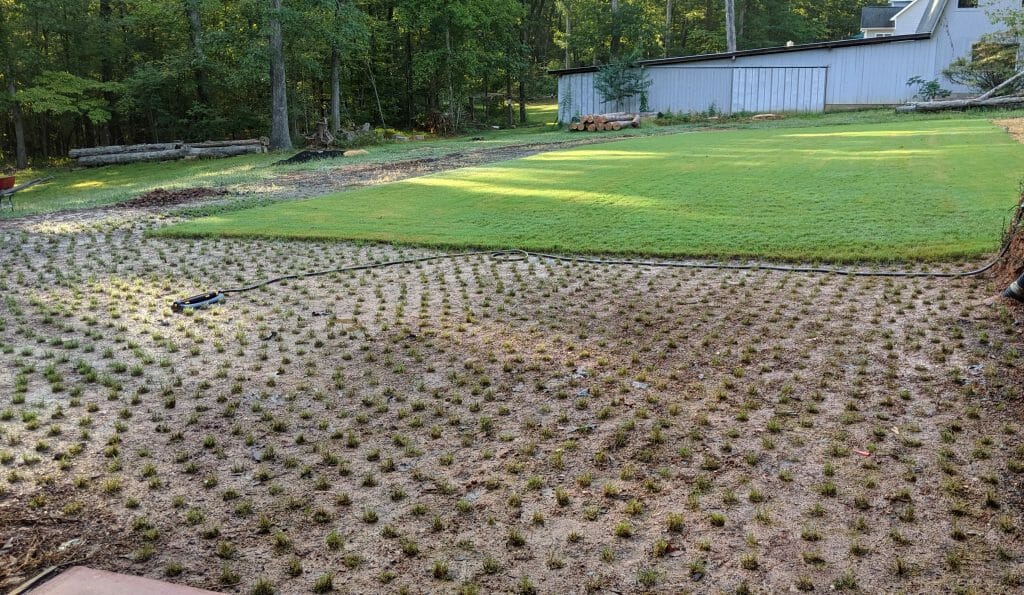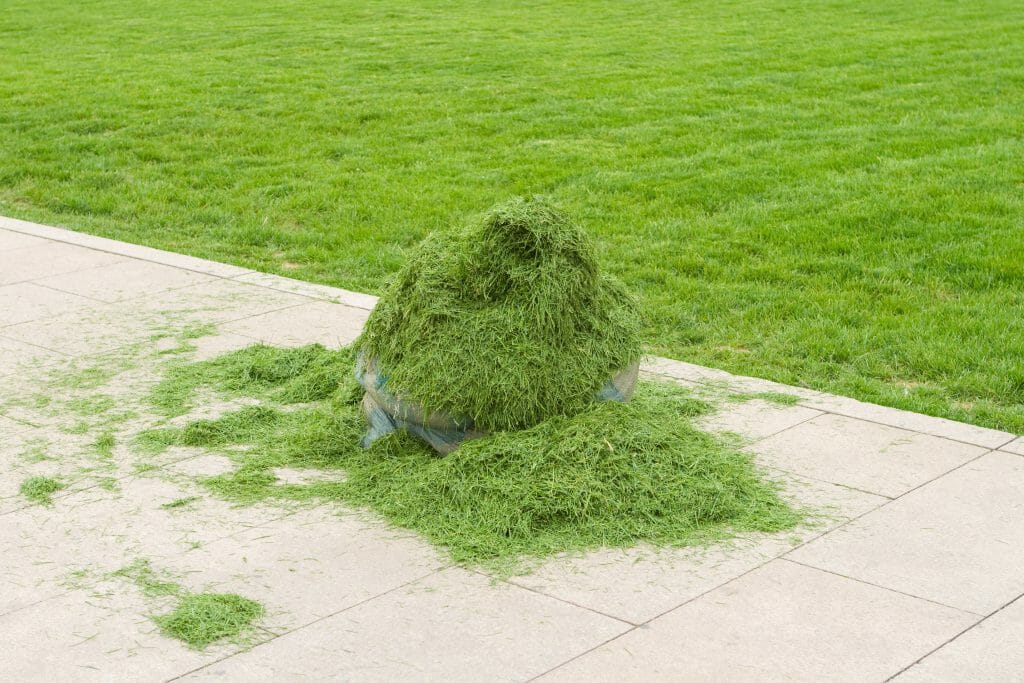Everyone wants a lush, beautiful, weed-free lawn in the summer. But how do you get there? The roots of your lawn are working hard under the soil, long before you can see new growth, to create a thick and strong cover of grass in the summer. To do that, the roots need to grow long and deep underneath the surface so that the plants can withstand drought, sun, mowing, and animal and human activity.
How Deep Are Grass Roots?
But how deep do grass roots grow? A healthy grass root system will grow anywhere from 6 inches to up to 2 feet in depth, depending on the species of grass. Since every lawn is different, roots will vary in size, but generally, the deeper the roots grow and the stronger the system, the healthier the lawn up top.
Read on to learn more about why a healthy grass root system is important, how you can promote deeper root growth, the lawn care and maintenance techniques you should be using to keep your grass healthy, and what obstacles may be in your way.
What Kinds of Grass Grow the Deepest Root Systems?
Not every variety of grass is suited for a lawn, and not every turf grass will produce the longest roots. Varieties like Kentucky bluegrass, fescue, Bermuda grass, Zoysia, and ryegrass are found in lawns across the United States and, in healthy soil, but down long, strong roots.
If you’re putting down a brand new bed of grass, you should understand the pros and cons of the more common grass varieties. Check out this chart for a brief overview of the differences between root systems:
| Name of Grass | Overview | Grass Root Depth Chart (mowed) |
| Kentucky Bluegrass | ● Grows in the northern half of the U.S.
● Hardy in winter ● High maintenance, but creates a lush, durable lawn |
1.5 to 2 feet, some even reaching 3 feet |
| Fescue | ● Cool-season grass
● Very durable; tolerant to droughts, heat and cold ● Low maintenance and efficient |
2 to 3 feet |
| Bermuda grass | ● Superior heat and humidity tolerance
● Very durable ● Grows in the southern part of the U.S. |
Anywhere from 2 to 6 feet |
| Zoysia | ● Best grown in southern regions
● Dense growth, durable under heavy traffic ● Law maintenance |
Up to 2 feet |
| Ryegrass | ● Fast-growing
● Tolerates the cold well ● Best grown in moderate climates like the Pacific Northwest |
3-4 feet |
Why is a Deep Root System Important?
The healthiest lawns have a strong and stable root system underneath to keep the grass growing back stronger year after year. The healthiest roots can grow several feet in length, meaning they’re soaking up all the water and nutrients your lawn needs to stay thick and green.
Deep roots can also help your lawn stay more durable during times of stress. This could be during severe storms, drought, heavy foot traffic, and more.
You also want strong roots to help prevent weeds. The stronger the roots, the harder it is for weeds to propagate since the roots of the grass will choke out any potential lawn pests.
Plus, once the older sections of the root die off, they decompose back into the soil, providing nutrients for new root systems to develop. If you’ve got a healthy, deep root system, any dying root matter will quickly be replaced by healthy new growth.
What Causes Shallow Roots?
To find out if your grass has shallow roots, you can test it by using a soil probe, or by digging a small hole to find out how far down the roots go. If your roots are shallow, generally under 18 inches, you’ve got some work to do to encourage them to grow deeper.
But why are your roots shallow in the first place? What causes shallow roots and what can you do about it?
- Heavy thatch – thatch is the buildup of dead grass, leaves, sticks and other debris that gets caught between the grass blades and the soil. If it gets thick enough, it can block water from penetrating the soil bed. To compensate, the grass will use its available energy to begin to grow longer blades upwards in an attempt to pierce through the thatch, leaving your roots to stagnate. While a little bit of thatch is alright if allowed to break down into the soil, too much will block off your lawn’s growth.
- Infrequent watering – There’s no way around it, grass needs lots of water if its roots are going to grow. If you live in an area that doesn’t get a lot of rain, it’s your responsibility to keep up with watering your lawn, especially in the dry season. The top 4-6 inches of the soil should always be a little damp, allowing the roots to soak up the moisture while the blades absorb the light. During the heat of summer, water your lawn every couple of days.
- Heavily compacted soil – roots need air, nutrients and space to grow. In a heavily compacted yard, there’s nowhere for the roots to grow, so they just… don’t. Aerating is the practice of breaking up the compacted soil with spikes, leaving the soil full of air. After aeration, it’s easier for water, nutrients, and air to reach down to the roots, promoting growth. It also frees up a lot of space, so the roots can more easily spread out.
How to Encourage Deep Root Growth in Grass:
There are lots of things you can do throughout the year to promote a deep and healthy root system. Here’s a few tips that you can implement
- Set your lawn mower to high. Cutting your grass too low means there’s less chlorophyll in the plant to spark photosynthesis. Therefore, the plant has less energy to devote to root growth because it’s too busy growing new length. You should mow no more than ⅓ of the grass’s length at a time. This ensures that the grass is always long enough to photosynthesize, and that the soil has plenty of shade to retain water.
- Aerate your lawn in the spring. Before the weather turns too hot, make sure you give your lawn a nice aeration to shake up the soil and make sure the air, nutrients and water can reach the roots more easily. Aeration also breaks up compacted soil, making it easier for roots to push through and grow deeper.
- Water your lawn regularly in the morning during the summer. You should keep an eye on your lawn all throughout the summer to make sure it never dries out completely. Run your sprinklers about 3-4 times per week. Plus, watering in the morning means the water won’t be able to evaporate like it would in the afternoon.
- Winterize your lawn at the end of the season. Consider a winterizing fertilizer treatment sort of like a spa day for your lawn after a long growing season. You’ll get a jumpstart on next year’s spring growth by loading your lawn up with nutrients right as it goes into hibernation.
- Keep watering your lawn, even in winter. Yes, you heard me. It’s completely possible for lawns to become dehydrated during the winter time if it’s not getting enough water from snow. Your lawn will thank you when it’s getting the water it needs, and your roots will be that much stronger and deeper come spring. Only water your lawn if the temperature is above 40 degrees, so there’s no chance of the water freezing.
Grass Root Depth: Warm Season vs. Cool Season Grasses
Grass roots play a crucial role in the health and vitality of lawns and landscapes, providing stability, nutrient uptake, and water absorption. The depth to which grass roots grow can vary depending on the type of grass and its growth habits. In particular, there are notable differences between warm season grasses and cool season grasses when it comes to root depth.
Warm Season Grasses
Warm season grasses thrive in hot and humid climates, such as the southern regions of the United States. These grasses include popular varieties like Bermuda grass, Zoysia grass, and St. Augustine grass. When it comes to root depth, warm season grasses typically exhibit the following characteristics:
- Shallow Root System: Warm season grasses tend to develop a shallow root system compared to cool season grasses. Their roots primarily occupy the top 4 to 6 inches of soil, spreading horizontally rather than vertically. This shallow root depth enables them to absorb moisture during periods of rainfall or irrigation quickly.
- Drought Resistance: Despite their shallow roots, warm season grasses can withstand drought conditions. Their extensive horizontal root network allows them to access water stored in the upper soil layers, minimizing moisture loss. During periods of water scarcity, warm season grasses may enter a dormant state, preserving energy and water resources until favorable conditions return.
- Heat Tolerance: Warm season grasses have evolved to withstand high temperatures and intense sunlight. Their shallow root system plays a role in this adaptation by allowing the grass to stay closer to the soil surface, where it can benefit from air circulation and the cooling effect of evaporation.
Cool Season Grasses
As the name suggests, cool season grasses thrive in regions with cooler climates, such as the northern parts of the United States and Europe. Common cool season grasses include Kentucky bluegrass, perennial ryegrass, and fine fescue. Let’s explore how cool season grasses differ in terms of root depth:
- Deeper Root System: Unlike warm season grasses, cool season grasses tend to develop a deeper root system. Their roots can penetrate the soil up to 8 to 12 inches or more, allowing them to access water and nutrients from deeper soil layers.
- Winter Survival: The deep root system of cool season grasses provides a survival advantage during harsh winters. These grasses can reach moisture stored in the deeper soil layers, reducing the risk of dehydration and frost damage. The deeper roots also offer stability and anchorage, preventing the grass from being easily uprooted during winter storms.
- Water Efficiency: Cool season grasses exhibit a higher water requirement compared to warm season grasses. However, their deeper root system enables them to tolerate longer periods between watering. The extensive root network allows for efficient water absorption from deeper soil layers, reducing reliance on frequent irrigation.
Understanding the differences in root depth between warm season and cool season grasses is essential for proper lawn care and maintenance. It informs watering schedules, fertilizer application, and overall management practices.
Frequently Asked Questions:
Does cutting grass promote root growth?
Mowing your lawn does promote root growth, but only when mowed properly. Only take the top 1/3rd of the grass blade off at a time so that there’s still enough of the blade left for photosynthesis. If you mow too low, the grass will spend its energy on new blade growth instead of deepening its roots.
What is a root stimulator?
Root stimulators can help give your lawn a head start while promoting root development. They protect the roots from stress and shock from damage, while encouraging rapid growth. This is possible because they contain auxin, a hormone that young plants release when developing their root systems. This supplements your grass’s own auxin production, leading to larger and stronger roots.
How deep do bermuda grass roots grow?
Bermuda grass is a warm-season turf grass that is commonly used in areas with a Mediterranean climate, such as in the southern United States. The roots of Bermuda grass can grow up to 6 feet deep, making it one of the deepest-rooted grasses.
How deep do fescue grass roots grow?
Fescue is a type of grass that is common in cooler climates, such as in the northern United States. The roots of fescue grass can grow up to 3 feet deep, not as deeply rooted as bermuda, but still one of the stronger root systems.
Conclusion
So, how deep are grass roots? While not as deep as wild grasses, the grass in your lawn produces roots that can grow anywhere from 2 to 6 feet deep. The deeper and stronger your root system, the healthier and thicker your lawn will look and feel. To maintain a healthy yard even in the off season, make sure you’ve got a lawn care routine that promotes root growth and you’ll reap the returns year after year.





